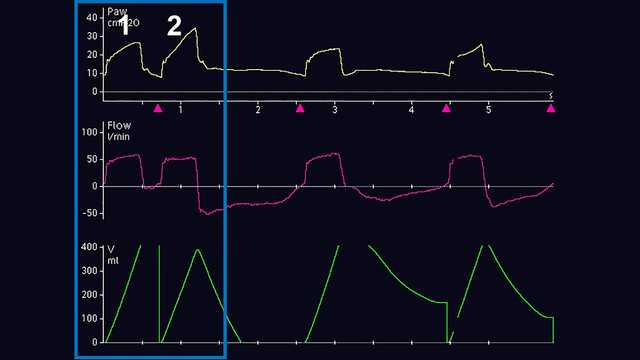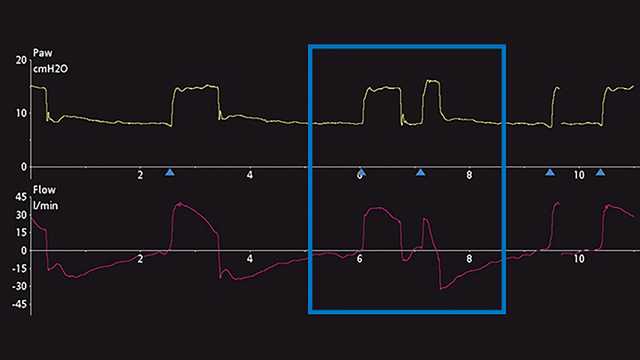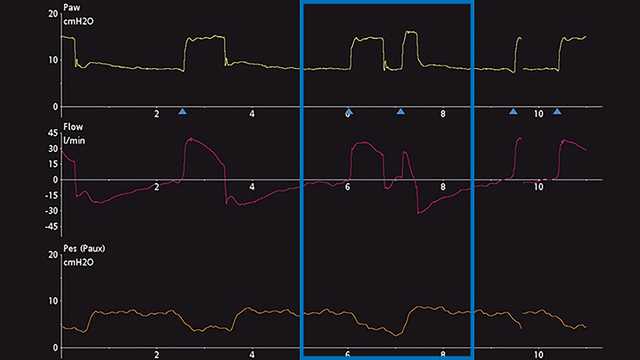
作者: David Grooms
日期: 08.07.2019

已对不同步的频率进行了研究,估计在接受机械通气 (MV) 超过 24 小时的病人中,不少于 50% 的病人至少会发生一次不同步。两种最常见的不同步是无效(错过)触发和双重触发 (DT) (
双重触发 (DT) 诊断的主要方法是观察和评估呼吸机标量波形。标量波形是随时间显示的任何变量。大多数机械通气机通常允许随着时间的推移显示压力、流量和/或容量。为进一步方便对这些波形的分析,一些呼吸机允许随时间显示食道压(近似胸腔压)。为演示正确识别 DT 的步骤,下面提供了呼吸机波形的截图。图 1 显示常见的压力、流量和容量波形,揭示了有创通气过程中的 DT 现象。最初,未经训练的眼睛可能无法诊断出这种现象,也无法正确确定问题的根源。通常被误认为是病人在机械定时呼吸(呼吸 1)输送或呼吸困难后主动产生二次呼吸(呼吸 2),如果这种问题持续存在,可能会导致与机械通气相关的严重不良影响。 因此,建议进行更仔细的分析,而且可以利用食道测压法进行,以比较和对比胸腔压和呼吸机的气道压力和流量变化。下面另一个示例表明显示压力和流量时间标量的呼吸机,提供了可能的 DT 的微妙提示,但也可能被误认为是额外的主动吸气努力(图 2)。食道压标量波形(Pes-Paux 波形)的增加表明,事实上,由于在单次主动吸气努力过程中随后的呼吸输送,因此存在双重触发(见图 3 中胸腔压的降低)。



在床旁区分和分类 DT 的类型也是一项挑战。目前的研究表明,DT 可以分为三种不同的类型 (
数据显示,在吸气前阶段触发的延迟通常在 0.07–0.13 之间 (
DT 最常见的原因是机械呼吸吸气时间与自然吸气时间匹配不当,以及高呼吸驱动的压力支持水平不足 (